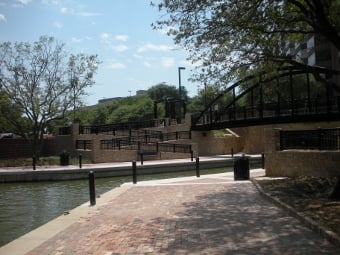Flora gives off oxygen that supports other life; namely human and animal – primarily. Fauna gives off carbon dioxide that supports plant life. That system, right now seems to be somewhat out of kilter. What I’m referring to is a rise in population, and due to development, vegetation to produce the oxygen necessary to support human and animal life is less prevalent, and that is having an impact.
Now add to the changing flora/fauna dynamic that there is a higher concentration of carbon dioxide in the air since the time the Industrial Revolution began in circa 1760’s England, and with reduced flora present to absorb the extra CO2, this means more of it is staying in the air and that, too, is having an effect.
So, a friend and I once had the following discussion: In the face of a drought, what makes more sense? To water trees or water lawns if a choice between the two had to be made? We both agreed that the smarter approach to take of the two was to let the lawns go and water the trees. It didn’t end there. We had the same discussion again, only this time the choices were between trees and potted plants in terms of being forced to decide between the two as to which to water. I thought the obvious decision was to let the plants in the pots make the sacrifice to save the trees. My reasoning behind such was that even though trees may require more water, given the size difference, it would take a lot more potted plants to absorb like amounts of CO2 from air than the typical tree. Of course, it all depends on the type of trees we’re talking about. I don’t believe palm trees, as one example, make for every effective carbon dioxide sponges.

In that sense, trees have definite utility. But, trees have utility in other ways too.
They provide lumber for building materials like for use in construction, furniture-making and more, like in the manufacturing of paper. I could be wrong, but my understanding of the paper-making process, it’s not an all-that-sustainable one. Therefore, the less paper that is used – and the paper used and, along with this, the more that can be recycled – the less need there is for the harvest of trees needed for paper-making.
Considering all that trees do and give us, they really don’t require from us much in return. Being fed a steady supply of water and light from the sun and a minimum required amount of CO2 and in some circumstances restorative help when out-of-sorts, they are, by any sense of the word, great investments in my book.
Life-sustaining trees: Good all around.
– Alan Kandel
![Bike-diamond-lane[1]](https://alankandel.scienceblog.com/files/2013/08/Bike-diamond-lane1.jpg)
The more people there are breathing CO2 out the more CO2 is converted to food to feed these people. Zero sum. Global warming started around 1920 when CO2 was 300 ppm and yet the world claims CO2 is the cause. A possible cause for the initial warming is the heat of combustion of the fossil fuels that emitted the CO2 and is still a major case. Heat emissions from fossil fuel and nuclear power are more than four times the amount that can be attributed to the rise in air temperature. Even had it been recognized in 1920 there is very little that could/would have been done differently. Even now when the crisis is acknowledged we still try to prolong the use of fossil fuels by advocating the capture and storage of CO2, a ridiculous proposal at best, but more important, it is counter-productive in that it removes the beneficial CO2 and continues the emitting of heat.